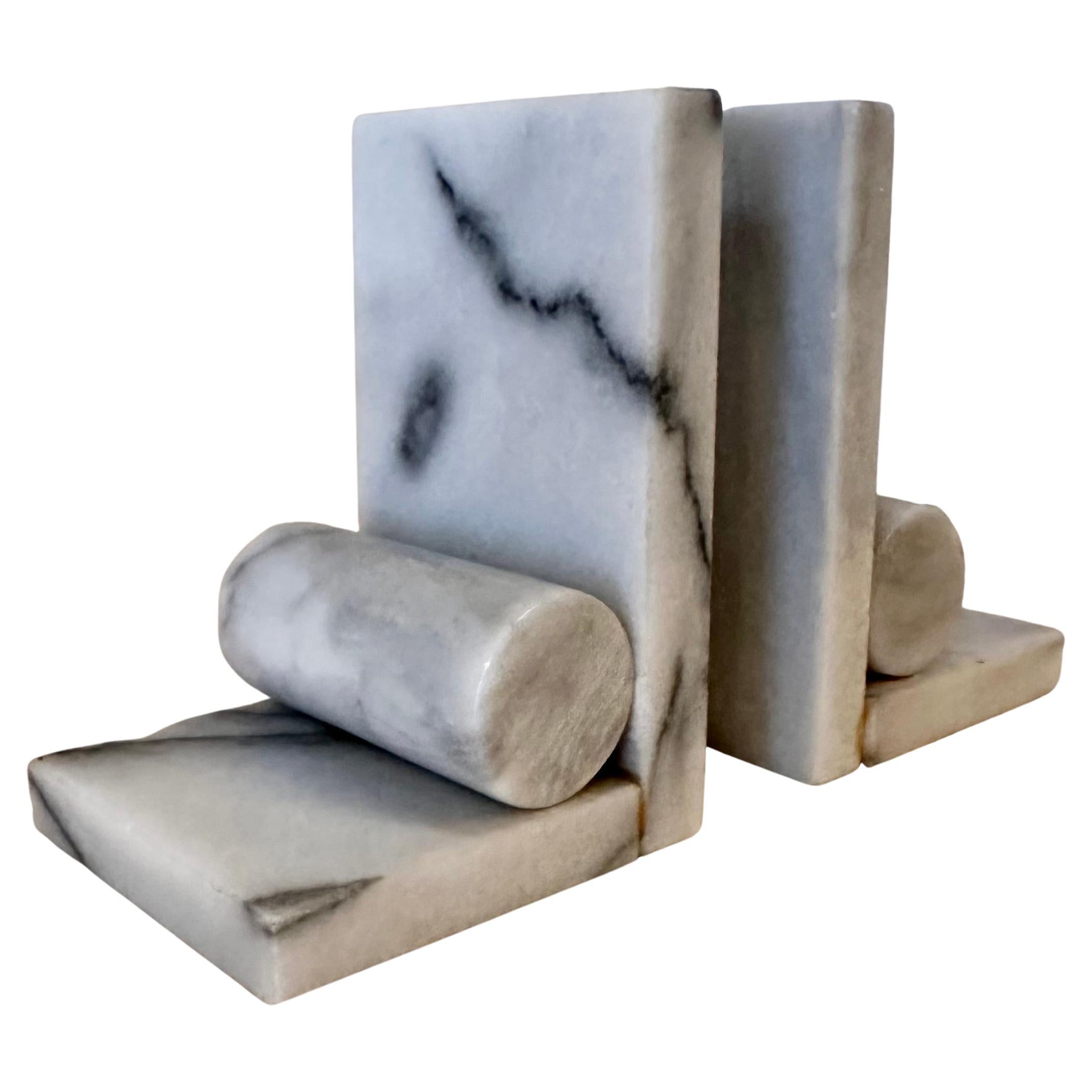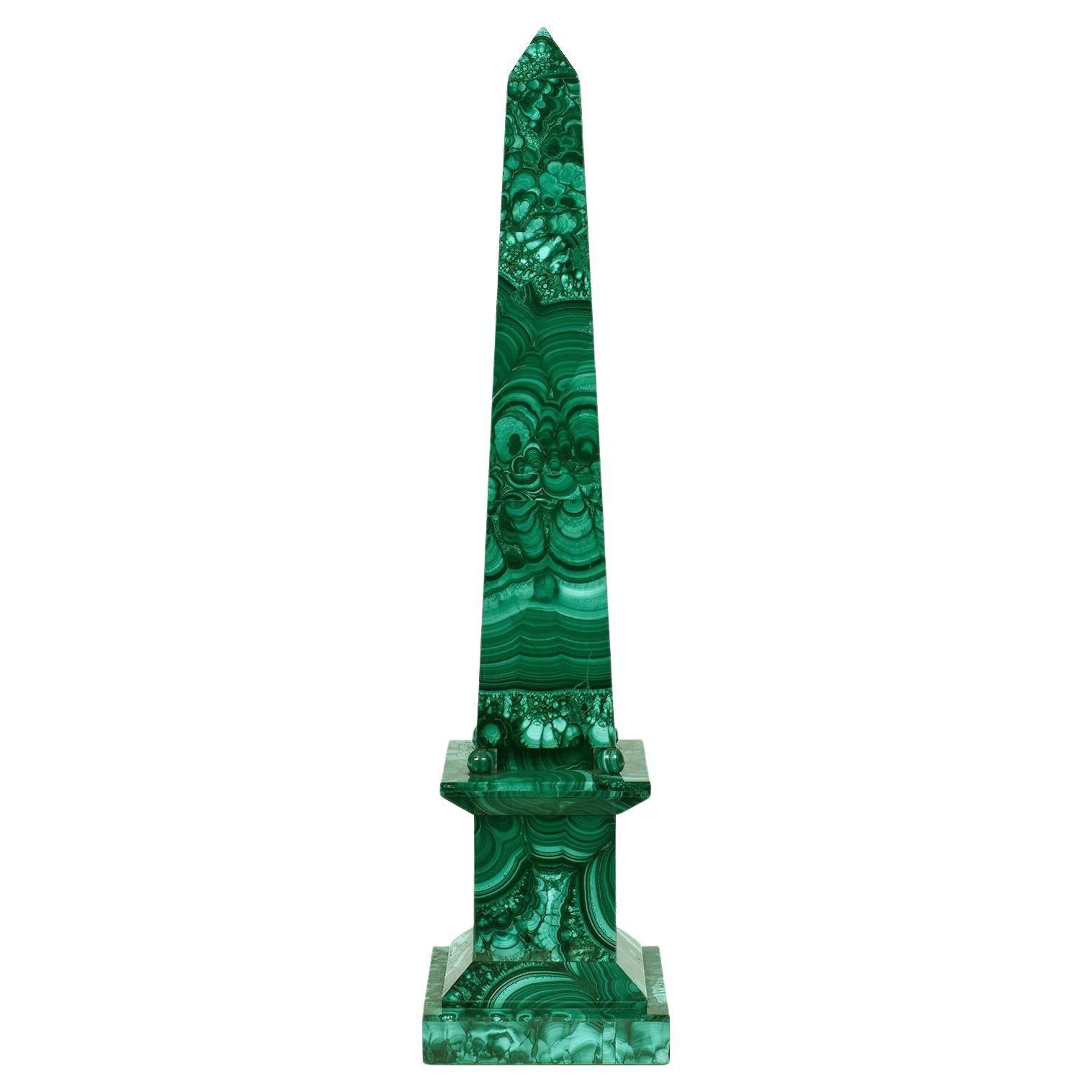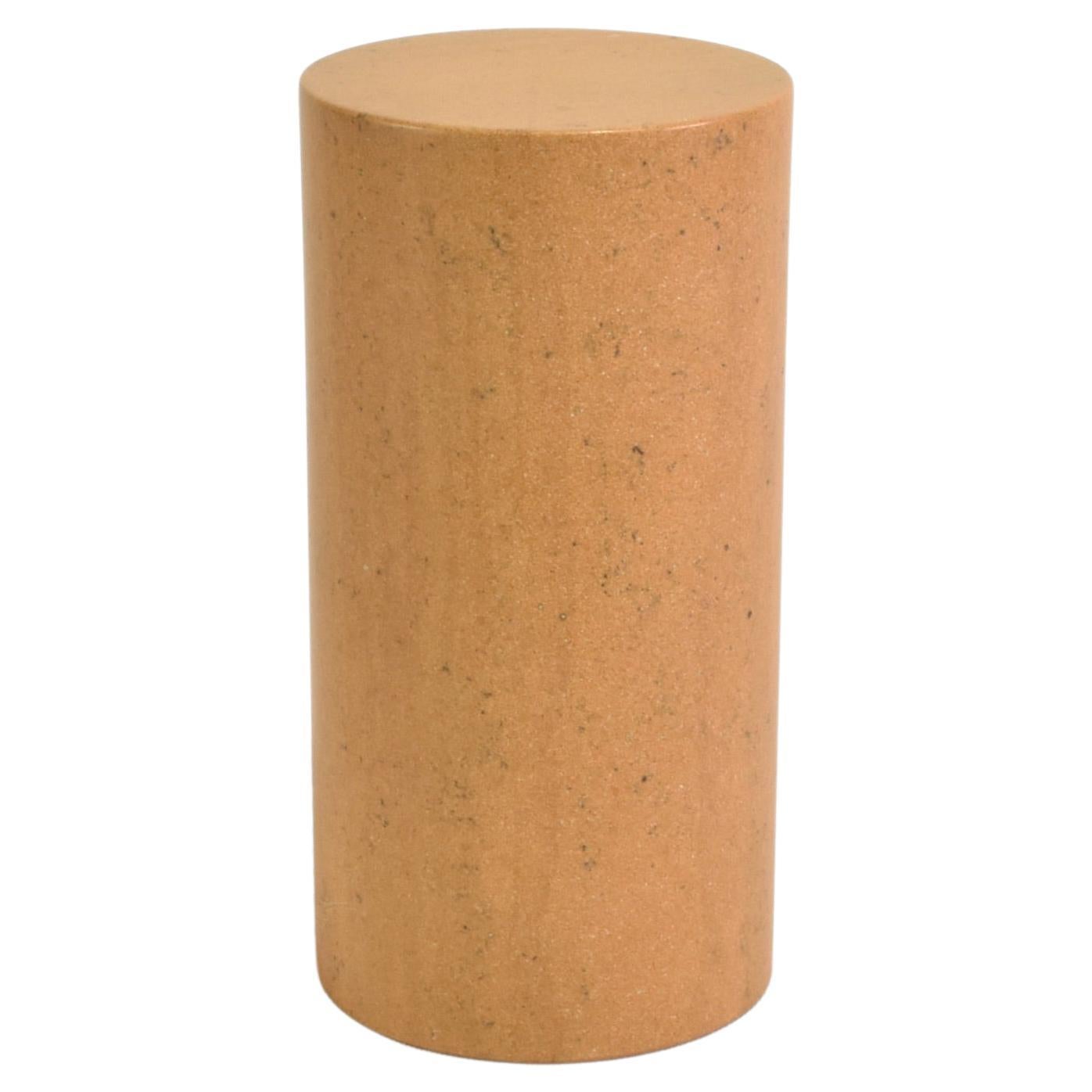Items Similar to Two cylindrical colored marble specimens
Want more images or videos?
Request additional images or videos from the seller
1 of 5
Two cylindrical colored marble specimens
About the Item
Two cylindrical specimens in Breccia Skyros Marble or Settebassi
Those two cylindrical specimens are perfect to serve as bookends or to presents works of art.
The name comes from the stone extracted in ancient times on the island of Skyros, North Sporades (Aegean Sea). Skyros marble was one of the most important marbles used by the Romans architects and sculptors. This marble was intensely exported towards Rome in the 1rst century BC, as the archeological testimonies of the Augustan period confirm. Skyros marble was mentioned in the writings of Strabo as the “varied stone Skyros”. The strategic position of the island favored the marble’s diffusion throughout all the provinces of the Roman Empire, from Syria to Baetica (Andalucía) Italy and from Switzerland to Tunisia.
It has been mentioned that this multicolored material had not only been used in Greece (Korinthos, Olympia, Epidaurus, Fillipoi etc) but worldwide in territories such as in Italy (Rome, Ostia, Pompei, Ercolano etc), Egypt (Alexandria, Cairo), Syro-Palestinian (Baalbek, Caesarea Maritima), Turkey (Side Ephesus, Miletus). Moreover, Skyros Marbles were also famous in West and East till the Middle Age. Over time, the material which had been used in Romaic buildings was removed and it has been reused in Christian and Islamic temples. Furthermore, it is worth mentioning that all the columns in the temple of Saint Marcus in Venice and some in Saint Peter in Rome have been constructed with Skyros Material.
The end of the marble extraction on the island came with the Second World War (1939-1945) when the British company had to cease its activity in Skyros.
- Dimensions:Height: 4.73 in (12 cm)Diameter: 6.3 in (16 cm)
- Sold As:Set of 2
- Style:Classical Roman (In the Style Of)
- Materials and Techniques:
- Place of Origin:
- Period:
- Date of Manufacture:19th century
- Condition:Wear consistent with age and use.
- Seller Location:Bruxelles, BE
- Reference Number:1stDibs: LU6666237119952
About the Seller
5.0
Vetted Seller
These experienced sellers undergo a comprehensive evaluation by our team of in-house experts.
1stDibs seller since 2022
6 sales on 1stDibs
Typical response time: 7 hours
- ShippingRetrieving quote...Ships From: Bruxelles, Belgium
- Return PolicyA return for this item may be initiated within 3 days of delivery.
More From This SellerView All
- Marble Roman relief representing a ChristogramLocated in Bruxelles, BEMarble Roman relief representing a Christogram Roman relief - 4th century 25 x 22 x 8 cm Provenance : Collection of the Château de B. À Nevers by Georges C.S., scholar born in 1833 and deceased in 1909 The entire castle and its collections were acquired in 1938 by the current owners of the estate A christogram is a monogram or combination of letters that forms an abreviation for the name of Jesus Christ. This rare fragment combines chi (X) and rho (P), the first two letters of Christ's name in Greek and it is one of the oldest and most popular early christian symbol. The monogram of Christ, or chrismon, is also a powerful symbol of imperial victory: it appeared to Emperor Constantine the Great before his battle against Maxentius in ad 312, promising victory in the name of Christ. In Plato's Timaeus, it is explained that the two bands which form the "world soul" (anima mundi...Category
Antique 15th Century and Earlier Italian Classical Roman Figurative Scul...
MaterialsMarble
- Marble Lion, Périgord, 17th CenturyLocated in Bruxelles, BEMarble lion white marble France, probably Périgord, 17th century Small marble lion wearing a coat of arms pendant with the engraved date, ...Category
Antique 17th Century French Renaissance Animal Sculptures
MaterialsMarble
- two Dutch Tobacco Jar - 19th centuryLocated in Bruxelles, BETwo Dutch Tobacco Jar Netherlands, 19th century Between 19 x 12,5 A collection of two fine Georgian Dutch Tobacco Jar. Made from Fruit wood those ring turned Jars show a very nice...Category
Antique 19th Century Dutch Georgian Snuff Boxes and Tobacco Boxes
MaterialsFruitwood
- Telamon - Northern Italy, late 12th (Reemployed Roman marble)25000Located in Bruxelles, BETelamon Northern Italy, late 12th - early 13th century Reemployed Roman marble H 32 x L 18 x P 17 cm « Sono coloro che hanno dimenticato che l’uomo é solo un bruco, destinato a dive...Category
Antique 15th Century and Earlier Italian Medieval Figurative Sculptures
MaterialsMarble
- Cercle of Jacopo della Pila - Marble relief depicting a winged CherubLocated in Bruxelles, BECercle of Jacopo della Pila (Lombard, in Naples 1471-1502) Marble relief depicting a winged Cherub Naples, second half of15th century 40 x 57 x 12 cm Exquisitely carved, this relief portrays a winged cherub with cascading hair and delicate features. The cherub's plump, smooth countenance, rounded cheeks, outlined lips, and finely drawn nose emanate a sense of tenderness. The quadrangular module, is adorned with a carved frame. The relief ascends gradually, transitioning from the low relief of the wings to the high relief of the head. The rectangular frame and the subtly curved form of the artwork suggest that the relief likely adorned the upper part of an arch or a vaulted chapel. The type is that of the perspective room with a coffered ceiling decorated with figures of winged cherubs, which is found in various Neapolitan chapels of the 15th century. Coffered ceilings attest to the recovery of antiquity and the search for luxury in Renaissance architecture, first in Florence, then in Rome and Naples. The majority of the numerous family chapels and tombs built during the late fifteenth century in south of Italy employ the new formal vocabulary of the Florentine Renaissance in a self-confident manner that permitted a broad spectrum of variations. The escalating admiration for the classical world, coupled with the development of perspective, significantly contributed to the Renaissance endorsement of coffered ceilings. This artistic and constructive device drew inspiration from the intricate marble patterns observed in historical landmarks such as the Arch of Titus, the Temple of Vesta in Tivoli, the Pantheon, and the Basilica of Maxentius. A distilled product of both mathematical and artistic cultures, deeply scrutinizing the ancient world, the coffered ceiling plays a vital role in the perspective construction of space with its regular and directional geometry. The motif of the coffered ceiling decorated with cherubs in relief was introduced in Naples by Francesco Laurana in the plastic decoration of the Arch of Castelnuovo. Laurana's impact on the art scene in the south of Italy was profound. The introduction of the winged cherub into the region's artistic vocabulary bridged the gap between the classical and the contemporary, creating a synthesis that resonated with both aesthetic and spiritual sensibilities. His influence extended beyond the immediate visual appeal, shaping the cultural identity of the Renaissance in southern Italy. Although the plastic decoration of the Arch of Castelnuovo cannot certainly be ascribed to a mature Renaissance style, it was precisely on this occasion that the sculptors who worked there could get to know and export throughout the Italian peninsula that type of "Florentine classicism" which, even in the 15th century Naples, was conditioned by the Burgundian culture imported into the Kingdom by Alfonso of Aragon himself, with artists called from Spain and Northern Europe. The coffered ceiling, with its geometric patterns and Laurana's winged cherubs nestled within, became a symbol of refinement and cultural sophistication. The relief sculptures, carefully integrated into the overall design, transformed the ceiling into a celestial realm, inviting viewers to contemplate the divine while immersed in the grandeur of the Renaissance space. Similar winged cherubs appears also in the Naples cathedral. Within the renowned Succorpo Chapel, a mesmerizing marble coffered ceiling adorned with cherubs epitomizes the splendor of the Neapolitan Renaissance. The interplay of light and shadow on the textured surface of the marble coffered ceiling introduces an ethereal dimension, providing an immersive visual experience for observers. The geometric precision and the repeated patterns, reminiscent of classical motifs, establish a sense of harmony and balance that has become the hallmark of the Neapolitan interpretation of Florentine Renaissance aesthetics. Although probably intended to be admired from a distance, this cherub is intricately detailed and exquisitely rendered: the face and hair are elegantly outlined and the feathers are textured through juxtaposed lines. The marble, both figurative and decorative, adheres to the principles of balance and restrained ornamentation typical of the « Florentine Classicism ». Harmonious shapes and gracefully orchestrated curves , rooted in the classical repertoire, converge to evoke a sense of ethereal beauty. The surface displays the masterful use of a chisel to intricately carve the feathers and facial features, creating an almost abstract quality. This work is a testament to a sculptor of great skill and rich figurative knowledge, seamlessly blending classical firmness in contours with a refined treatment of the marble's surface. The combination of tradition and innovation point to a stylistic idiom from Lombardy, in particular we can find some comparaisons with the works of Jacopo della Pila, sculptor of Lombard origin working in Naples in the second half of the 15th century. He is documented there between 1471 and 1502, and is a protagonist of the Aragon Renaissance in the second half of the Quattrocento, together with the other great Northern sculptor active in the kingdom, Domenico Gagini. the first commission he received dates back to August 9, 1471, when Jacopo publicly committed to sculpting the funerary monument of Archbishop Nicola Piscicelli to be placed in the Cathedral of Salerno. The last known work is an altar ordered on July 29, 1502, by the noble Jacopo Rocco for the church of San Lorenzo Maggiore in Naples. Between these two chronological extremes (1471-1502), we must place the fervent activity of the artist, who had trained in Rome, perhaps under the guidance of Paolo Romano but also engaged in dialogue with other major artists of the city, especially Isaia da Pisa. He enriched his experience in Naples, initially drawing inspiration from the works of Domenico Gagini and later from the Tuscan masterpieces of Antonio Rossellino and Benedetto da Maiano destined for the church of Santa Maria di Monteoliveto. Jacopo della Pila's artistic personality is thus based on a complex interplay of influences, contributing to the definition of a highly personal style. Close comparaison can be made between our cherub and the winged angels reliefs...Category
Antique 15th Century and Earlier Italian Renaissance Figurative Sculptures
MaterialsMarble
- Plateau with two breasts, attribute of Saint Agatha - 17th centuryLocated in Bruxelles, BEPlateau with two breasts, attribute of Saint Agatha Southern Italy, 17th century Polychrome and gilded wood 20 x 14,5 x 15 cm Born into a noble lineage, Agatha came into the world ...Category
Antique 17th Century Italian Baroque Figurative Sculptures
MaterialsWood
You May Also Like
- Marble Cylinder BookendLocated in Richmond, VAThe Cylinder Bookend is the newest design from our in-house collection. Display as a sculpture, use as a chic door stopper, or simply as a bookend. Handcrafted out of red marble by a...Category
2010s Bookends
MaterialsMarble
- Pair of Italian Marble Specimen ObelisksLocated in Stamford, CTPair of Italian Marble Specimen Obelisks, of various variegated colored marbles on black stone plinth bases in the Grand Tour style. Late 19th / Early 20th century.Category
Vintage 1920s Italian Obelisks
MaterialsMarble
- Specimen Marble Obelisks, Grand Tour StyleLocated in El Monte, CAA superb pair of specimen marble obelisks constructed from a variety of specimen marbles. The highly decorative and large scale pair complements traditional and contemporary interiors.Category
20th Century Grand Tour Obelisks
MaterialsMarble
- Pair of Marble Bookends with Solid Cylinder DetailLocated in Los Angeles, CAA lovely pair of Carrara marble bookends - two 90 degree angle pieces with a solid cylinder as a very nice and simple detail. The pair would be a complement to any desk, or work ...Category
20th Century Mid-Century Modern Bookends
MaterialsCarrara Marble
- Natural Malachite Obelisk Mineral SpecimenLocated in Point Richmond, CAThis one-of-a-kind malachite obelisk is one of the best I have come across, with pleasing proportions, a regal design, and a degree of complexity requiring greater skill and precisio...Category
20th Century European Other Obelisks
MaterialsMalachite, Onyx
- Sandstone Cylinder BookendLocated in Richmond, VAThe Cylinder Bookend is the newest design from our in-house collection. Display as a sculpture, use as a chic door stopper, or simply as a bookend. Handcrafted out of yellow sandston...Category
2010s Bookends
MaterialsSandstone





